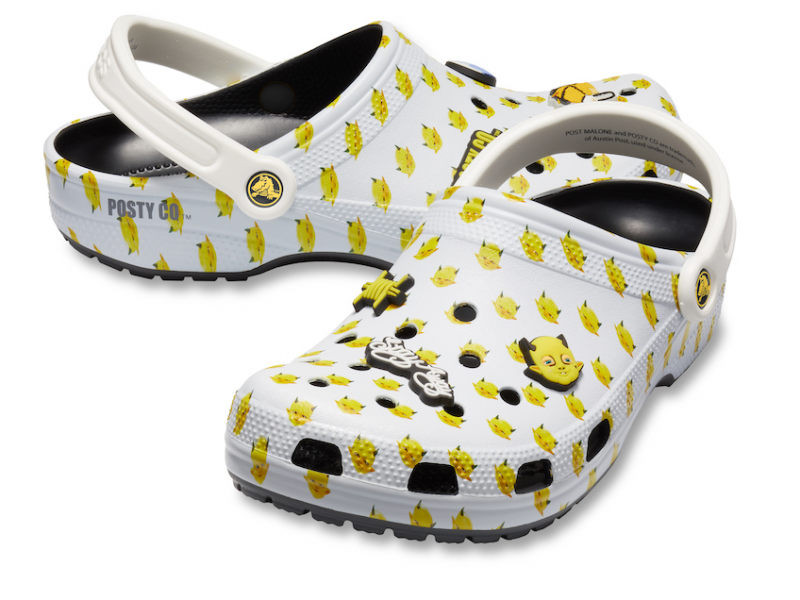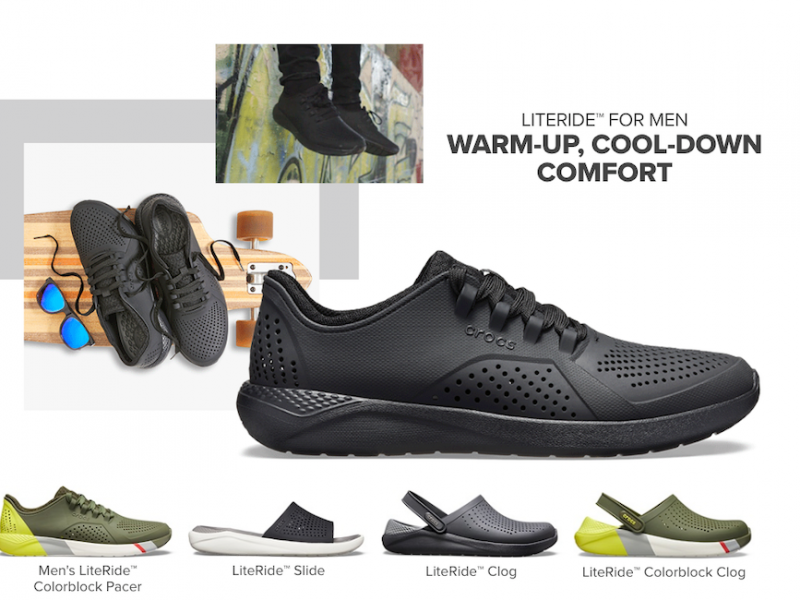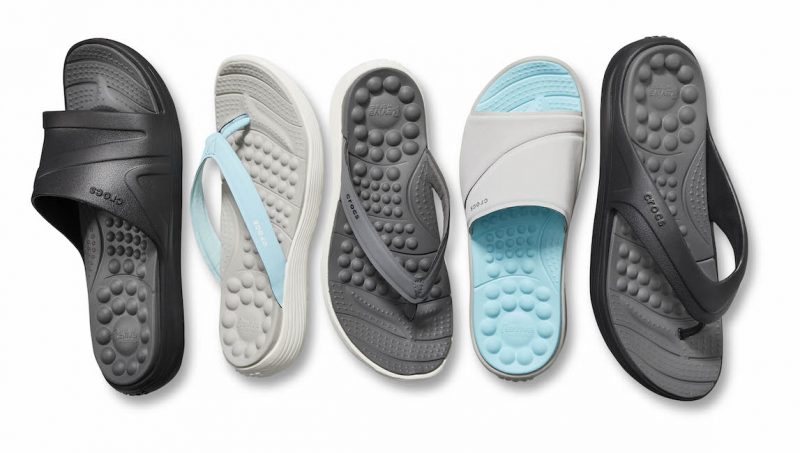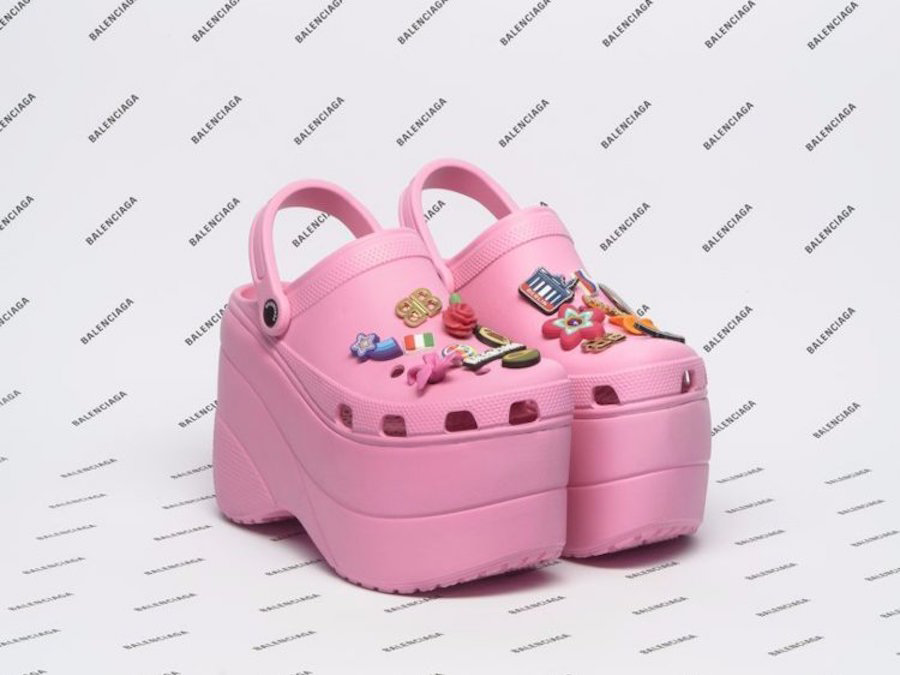- Crocs’ clogs are some of the most controversial footwear on the market. Over the years, they’ve been featured on Time’s “50 Worst Inventions” list, described as “vermin,” and most recently pinned to the ugly fashion movement.
- But exploiting the tension between the lovers and the haters is all part of Crocs’ master plan, CEO Andrew Rees recently told Business Insider.
- Three Crocs executives spoke with Business Insider about the company’s future plans for growth, why it’s doubling down on comfort, and how it’s bringing more style to the Crocs brand.
- Visit Business Insider’s homepage for more stories.
The Crocs clog is perhaps the most divisive shoe on the market.
In fact, the difference in opinion between the lovers and the haters is so extreme that the debate often feels more appropriate for politics, not fashion. A Facebook page called “I don’t care how comfortable Crocs are, you look like a dumba–,” for example, has more than 1.2 million fans.
The press hasn’t been any kinder. Over the years, the Crocs clogs have been featured on Time’s “50 Worst Inventions” list, described as “vermin,” and, most recently, pinned to the ugly-fashion movement. But despite this, Crocs has a loyal fan base, and judging by its growth in 2018 – revenues hit $1.09 billion, jumping 6.3% over 2017 – it’s clearly managing to win over more people.
Exploiting the tension between the lovers and the haters is all part of Crocs’ master plan, CEO Andrew Rees says.
"Our goal is not to make the haters love the brand," Rees recently told Business Insider. "It's to exploit that extrinsic tension because it creates opportunity, it creates PR, it creates media, it creates interest. It creates a whole lot that would cost you a fortune to buy in other ways."
More recently, this tension has manifested in Crocs' collaborations with brands and designers like Balenciaga, Christopher Kane, and rapper Post Malone, who have all created their own wacky takes on the clog. These partnerships have given the shoe greater exposure, brought it into the realm of high fashion, and even turned it into a fashion statement.
The media attention around these collaborations is helping to reignite consumer interest around Crocs. But Rees is the first to admit that rapid peaks in interest are quite often followed by large troughs. Crocs came close to bankruptcy in 2009 after demand for the clog had shot up just two years before, only to dry up quickly. It found itself overstocked when the recession hit and lost $185 million in 2008.
So Rees is intensely focused on finding ways to drive long-term sustainable growth and keep its core customer engaged. And, this means not being too controversial in any of its collaborations.
"[A collaboration] needs to be a little controversial, but not too controversial, and it needs to be clear that your voice is all-embracing, not judging," he said.
He added: "The risk is that you align yourself with a brand or with an artist that is too controversial and it jars with your core customer base in a way that they don't understand."

More than a trend
To prevent this, Crocs is looking to partner with a wide mix of brands. The pipeline for these collaborations stretches well into 2021, Rees said.
Crocs also wants to avoid going after transient trends.
"[Trends] come and go really fast, and that creates a lot more volatility to your business," Michelle Poole, Crocs' senior vice president of product and merchandising, told Business Insider in a phone conversation.
"When you're preying on the more high-end and high-style trends, that's where the roller-coaster effect happens," she added.
Rather than double down on ugly, the style du jour, Crocs is rolling out more elegant silhouettes to broaden its reach.
"We are baking in a lot more style than you've ever seen from Crocs," Poole said.

She pointed to the brand's LiteRide collection, which launched last year, as an example. This new collection is targeted at millennial consumers between the ages of 21 and 34 and features sleeker versions of Crocs' signature clog and sandals. They cost between $45 and $60.
These new styles, especially the Pacer, are more like sneakers than anything else.
Poole describes the LiteRide clog as the "most contemporary-looking clog" Crocs has ever had.
"Yes, it's still a clog, but ultimately it's just like a backless sneaker," she said.
Poole says this collection is more commercial than ever before. It's the "antithesis of ugly fashion," she said.
What's more important than comfort?
Any true Crocs fan will tell you that while its shoes might be considered "ugly," they're definitely comfortable, and what's more important than comfort in footwear right now?
The shift toward wearing more casual and comfortable shoes is something that Crocs is primed to capitalize on and something that Rees doesn't see going anywhere anytime soon.
"The norms of society and expectations are changing," he said, reflecting on his childhood growing up in England, where he said that the expectation was to wear black shiny shoes to school that you had to polish every day.
"They really weren't that comfortable, but that was the expectation," he said.

To respond to this trend, Crocs is taking comfort to the next level and making it a focal point of its marketing.
"What we'd actually see was that some of the competition were doing a better job of comfort. It was actually more visible to the consumer and then they were marketing the heck out of it," Poole said.
"Head to toe, you've actually got to get consumers to visualize the comfort before they even put it on," she added.
In February, Crocs launched its new Reviva collection, which costs around $35 to $40. These sandals have built-in bubbles that are designed to have a massage effect when you walk. These are the company's most comfort-focused shoe yet.
"Comfort is not a trend, it's a way of living," Stefano Ferniani, Crocs' senior director of global innovation, told Business Insider. "People aren't willing to compromise anymore."
So, "we're strengthening our strengths," he added.

